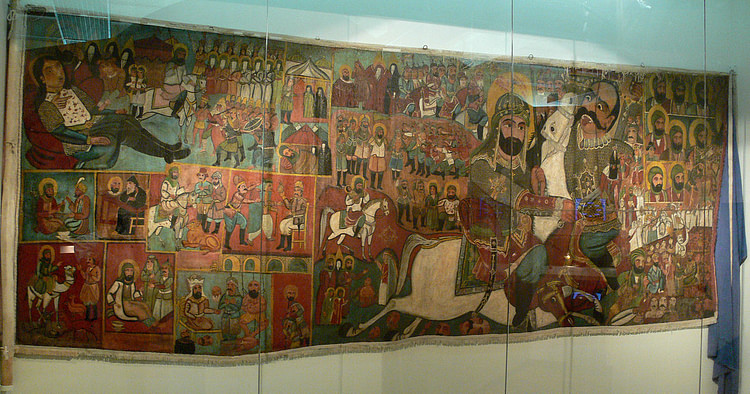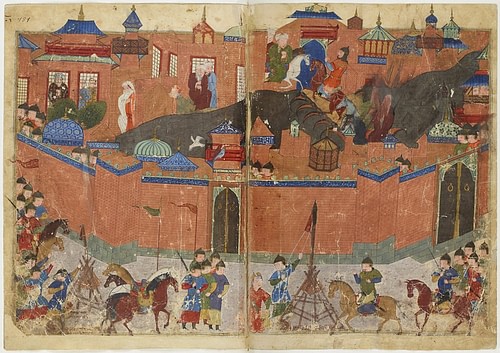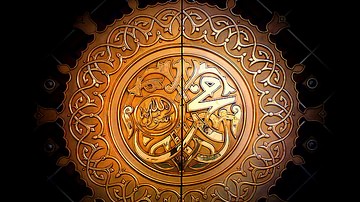
Caliphate (“Khilafat” in Arabic) was a semi-religious political system of governance in Islam, in which the territories of the Islamic empire in the Middle East and North Africa and the people within were ruled by a supreme leader called Caliph (“Khalifa” in Arabic – meaning successor). Caliphs were initially the sole sovereigns of the empire left behind by Prophet Muhammad and added vast territories of surrounding rival empires to it. They were initially selected by a group of senior members of a primitive parliament who kept in mind the will of the people. The first four caliphs, who were nominated in such a way, are referred to as the Rashidun (rightly guided) caliphs by mainstream Sunni Muslims; Shia Muslims consider only Ali, the fourth one, to be legitimate and discard the claims of the first three by branding them as usurpers.
The caliphate soon became a hereditary institute when the dynastic system of rule was introduced to the Islamic world by the Umayyads, who were overthrown and replaced by the Abbasids. The Abbasids, after the destruction of Baghdad in 1258 CE, held nothing but the title itself. This was to change when the Ottoman Sultans took over the institute, becoming the first and last non-Arabs to do so, and continued it until 1924 CE when it was officially abolished by Turkish nationalist leader Mustafa Kemal Pasha (the father of modern Turkey).
Rashidun Caliphate
One problem with the Prophet Muhammad's demise (632 CE) was that he had not appointed an heir, and since he had no surviving sons, a conflict arose. The closest relative of Muhammad, according to some his rightful heir, was Ali, his cousin and son-in-law (he had married Muhammad's daughter Fatima) – these people came to be known as “Shia't Ali” (the party of Ali) and would later transform into a separate sect of Islam. But the Arabs were not used to a dynastic system of rule, hence the vast majority of the Muslim community supported the claim of the ablest and the closest of Muhammad's companions – Abu Bakr, this group came to be known as the Sunnis (followers of the “Sunna” or the way of the Prophet). Abu Bakr was given the title of caliph (successor of the Prophet), and he also received the sincere support of another senior and respected companion of Muhammad, Umar, who would in time become his successor.
Abu Bakr (r. 632-634 CE) proved himself a competent leader. Most of the Arabian tribes refused to accept the caliphal authority on the pretext that their loyalty was only to Muhammad as a person, not to Islam – these apostates also joined hands with “imposters” or false prophets who kept on emerging with new and obscure faiths. From his capital in Medina, Abu Bakr responded competently by calling the “faithful” to arms under the banner of Jihad (holy war – contextually). The Muslim armies triumphed over the rebels and Abu Bakr succeeded in uniting the entire Arabian Peninsula. Knowing that tribal affiliations would eventually resurface, Abu Bakr sent the newly formed armies to consolidate hold over Arabian tribes in Sassanian and Byzantine territories. These attacks were meant to be raids but turned into swift and permanent conquests. After Abu Bakr's death in 634 CE, his most powerful supporter – Umar ibn Khattab (r. 634-644 CE) became the next caliph.
Umar continued Abu Bakr's campaigns, and the simultaneous victories at the Battle of Al Qaddissiya and the Battle of Yarmouk in 636 CE opened the way for conquest of most of the Sassanian Empire and the eastern provinces of the Byzantine Empire – mainly Egypt, Syria, and the Levant. Umar introduced many reforms and new institutions such as police, pensions, courts, parliaments, etc., but above all, he was known as a god-fearing man who surpassed all in administering law. He was assassinated by a Persian slave named Lu'lu in 644 CE.

Umar's successor was Uthman ibn Affan (r. 644-656 CE), from the wealthy clan of Banu Umayya and a close friend of Muhammad. Though a pious man and devoted to the new faith, he was not popular. The problems kept in check under Umar's strict regime – such as the sheer cost of aggressive expansion – began to surface and they were too much for the new caliph. His tenure was not devoid of military success but the cost outweighed the profits generated by these conquests. He was murdered in 656 CE in his own house by rebellious soldiers from the garrison city of Fustat in Egypt, and with his death died the unity of the Muslim Ummah (community).
Muawiyya (the able governor of Syria), Uthman's cousin and now the head of the Umayya clan, wanted revenge for the murder, but the new caliph Ali ibn Abi Talib (r. 656-661 CE) failed to comply. This enraged not only Muawiyya but also other Muslims, and hence his reign was marked with constant civil wars and expansion was halted. In another controversial move, he also shifted the capital from Medina to Kufa, a garrison city in modern-day Iraq. Ali met a similar end to his predecessor; he was murdered by an extremist group called the Kharijites in 661 CE while he was offering prayer in congregation. Ali has gained unprecedented posthumous fame, mostly because of his place in Shia ideology. He has been venerated as the only true successor to Muhammad by them, while the Sunni Muslims consider all four caliphs equally legitimate and rightly guided (“Rashidun” in Arabic).
Umayyad Dynasty
Even while Ali was still ruling, Muawiya had audaciously challenged his authority on moral grounds. Using the tragic death of his cousin to propagate his agenda, he had managed to strengthen his power. After Ali's death, Muawiya's (r. 661-680 CE) only contender was Ali's eldest son Hasan, who abdicated the office in the former's favor in return for a high pension. The year 661 CE marks the official start of the rule of the Umayyad Dynasty with Muawiya as its first caliph and Damascus the new capital; power was shifted from Iraq to Syria, and Medina would never regain the political prestige it once had. His 20-year reign was the most stable for the Ummah (Muslim community) since Umar's death. Nearing the end of life, Muawiya appointed his son Yezid (r. 680-683 CE) as his successor, and this was met with much resistance, most notably from Ali's younger son Hussayn, who was killed (a martyr in the eyes of both Sunnis and Shias) along with his army, mostly his family members, by Yezid's forces at the Battle of Karbala in 680 CE.
Caliph Abd al-Malik (r. 685-705 CE) encouraged centralization in the empire and elevated the status of Arabic, making it the lingua franca of the empire. It was also during his reign that Tunis was conquered (in 693 CE), the local Berber population accepted Islam and in time would spread the boundaries of the empire into the Iberian Peninsula. The rebellious province of Iraq (because of Shia Muslims) was also kept in check by placing it under the control of a ruthless but loyal governor – Hajjaj ibn Yusuf (l. 661-714 CE).
The empire reached its greatest extent under the son of Abd al-Malik – Walid I (r. 705-715 CE), under whose canopy great generals contributed vast expanses of new land to the empire. Muhammad ibn Qasim successfully conquered parts of what is modern-day Pakistan (by 712 CE), while Kutayba ibn Muslim conquered Transoxiana (by 713 CE). Tariq ibn Ziyad initiated the Muslim conquest of Hispania in 711 CE and was reinforced by Musa ibn Nusayr; by the time of Walid's death, the duo had conquered most of Spain.
The only one of the Umayyads to receive any praise from Muslim historians was the highly devoted and pious Umar ibn Abd-Al-Aziz (r. 717-720 CE). Also known as Umar II, he was devoted to Islam and his short reign was reminiscent of the earlier Rashidun Caliphate. He promoted equality, facilitated conversion by making taxes lenient on non-Arab Muslims, stopped public cursing of Ali, and also halted raids on peaceful neighbors of the empire. His unwavering stance on justice and piety brought him into rivalry with his own clan, who killed him in 720 CE; he is remembered to this day as a legendary figure by the Muslims.
By the late 740's CE, internal divisions and constant civil wars for succession – coupled with incompetent rulers – had left the empire fractured. The able ruler Marwan emerged from the final civil strife in 744 CE but would be the last of his family to rule the empire. In 750 CE, he was defeated by a new force – the Abbasids. With the death of Marwan, the undisputed rule of the Umayyads was over – although they would retain a small part of their former empire: Al Andalus (which persisted until 1492 CE).
Abbasid Dynasty
The Abbasids were the descendants of Prophet Muhammad's uncle Abbas and they used this fact to legitimize their claim to the caliphate. After the Abbasids overthrew the Umayyads in 750 CE, Abu Abbas As-Saffah – “the bloodthirsty” (r. 750-754 CE) was declared caliph. Umayyad graves in Syria were dug out and their remains were burnt, and the living male members were all massacred, all save one – Abd al-Rahman I, who escaped the Abbasids, making a perilous journey to Al Andalus, where he established the Umayyad Caliphate of Cordoba (in 756 CE), which would rival the Abbasids in elegance and grandeur.

Al Mansur (r. 754-775 CE), the successor of As-Saffah, created a new capital near the Tigris river – Baghdad (in modern-day Iraq) – a city that surpassed all European cities of the time in every standard. Artists, architects, scholars, poets, historians, scientists, astrologists, mathematicians, and other people of many fields contributed to the elevation of the city, transforming it into a hub of learning and culture in the Islamic empire.
Under Caliph Harun al-Rashid (786-789 CE), the most famous of the Abbasids (who has also been featured prominently in folktales and legends), the Grand Library of Baghdad – the Bayt al Hikma (House of Wisdom) was established which became the center of learning of the world. Here, the classic works of the Greeks were translated into Arabic and, in time, it would largely be because of the Bayt al-Hikma that the European Renaissance would take place as all of the Greek manuscripts would have been otherwise lost. His reign is remembered as the golden age of the Abbasids; not only did his government make great advances in administration but he also showed great competence in battle by leading armies into Asia Minor on successful military campaigns against the Byzantines in 806 CE.

His decision to divide the empire between his two sons: Al-Amin and Al-Ma'mun led to an expensive civil war after his death, out of which Al-Ma'mun (r. 813-833 CE) emerged victorious. This civil war was one of the major causes for the collapse of the empire. Al-Ma'mun was a patron of arts and learning but not as politically active as his predecessors and did not even have the same respect for his faith. With the death of Al-Ma'mun, the zenith of the empire was also lost, in fact even during his reign, different regions of the empire had started to break away in the form of separate emirates.
The contestants for caliphate started relying heavily upon Turkish bodyguards for gaining the throne, since the empire was almost always in a state of civil war. The sheer cost of these private armies and incompetent rulers who could not maintain a tight grip over the vast empire rendered them virtually bankrupt. Moreover, in 909 CE a rival Shia (anti-) Caliphate appeared in western parts of North Africa and then spread all the way to Egypt and Hejaz, who referred to themselves as the Fatimids – the descendants of Fatima, the Prophet's daughter (these Shias were from a radical sect called the Seveners – as they believed in seven imams, instead of the mainstream Shia Muslims we are familiar with today, who believe in a different lineage of twelve imams). The Fatimids would continue to operate until 1171 CE when they were abolished by Saladin (l. 1137-1193 CE), who brought Egypt under the suzerainty of the Abbasids.
Adding to these fragmentations, the Abbasids, themselves Sunnis, had now come to be dominated by a Shia Iranian empire called the Buyids – named after their founder Ali ibn Buya (l. c. 891-949 CE). In 945 CE, the Buyids captured Baghdad and reduced the caliphs to mere figurehead. The Buyids were then overthrown in 1055 CE by the Seljuks, a Turkic tribe from central Asia who had accepted the Sunni version of Islam in the 11th century CE and began expanding their empire all the way to Asia Minor. The Seljuks captured Baghdad but nothing changed for the caliphs; they retained only their titles. The Seljuks fell just as swiftly as they rose and, by the 12th century CE they were no longer the strong and formidable force they had been. They were mere spectators in the Crusades (1095-1291 CE), a conflict that had been initiated by their rise and the threat they had posed to the Byzantine Empire after the Battle of Manzikert (1071 CE). The Abbasids used this opportunity to gain complete, although short-lived, autonomy.
A new threat, however, now emerged from the steppes of Central Asia: the Mongols. Caliph Al-Must'asim (r. 1242-1258 CE), the last of the formal Abbasid rulers, was besieged in his own capital in 1258 CE by Hulegu Khan's forces. The entire city was leveled, its population was massacred, and Al-Must'asim was rolled in a carpet and trampled under the hooves of horses. With the destruction of Baghdad, the Abbasid rule came to an end, though shadow-caliphs continued to live in Cairo but apart from the title, they had nothing, not even any symbolic significance.
Ottoman Sultanate
In 1299 CE, a former Turkish vassal to the Seljuks and a tribal chieftain named Osman (r. c. 1299-1324 CE) began expanding his dominion in Asia Minor at the expense of the weakened Byzantine Empire and formed the Ottoman Sultanate (named after Osman). Osman and his descendants, considering jihad and imperial expansion a moral duty, continued to swiftly conquer vast territories. By 1453 CE, from their capital at Edirne (Adrianople), the Ottomans held dominion over territories in Asia Minor, the whole of Anatolia, and many regions in the Balkans. Two major efforts of the European Christendom to halt their advance failed in 1389 CE (Battle of Kosovo) and 1444 CE (Battle of Varna).
By 1453 CE, Constantinople was all that remained of the Byzantine realm and the Ottoman Sultan Mehmed II (r. 1451-1481 CE) was determined to take it. Mehmed's siege turned out to be successful and the city became the Sultanate's new capital. With the possession of the Dardanelles, the Ottomans held the monopoly of the major trade routes (part of the Silk Road) in the Middle East and Eurasia and had no intention of sharing them with the rest of the world. They closed the Silk Road and this forced other western powers to explore the unknown world – the Age of Exploration – which led to the conquest of the so-called “New World” by European powers.

Mehmed, and earlier Sultans, had claimed the title of caliph for himself and, with no one else to challenge him for it, the claim was somewhat legitimate. It was further legitimized, however, in 1517 CE when Sultan Selim I conquered the Mamluk Sultanate and officially transferred the title from the Abbasid shadow-caliphs to the Ottomans. The Ottomans held onto this title for four more centuries, although the Muslim world was not united as before, but the symbolic (semi-religious) importance of Caliphate persisted in the hearts of the Muslims, who saw it as a symbol of unity of the Ummah, and the Turks were honored for it as well. The defeat of the Ottomans in the First World War (1914-1918 CE) led to the rise of nationalist Turkey, whose founder – Mustafa Kemal Pasha – officially abolished the institute of caliphate in 1924 CE. After that, no other nation assumed the caliphal authority over the Islamic world.
Conclusion
The institute of caliphate showed three major phases of evolution. At first, it started as a religiously-inspired political system whose holder must ensure that the “law of God” must prevail over his land, although the lack of centralization meant that most of the local customs and administrative frameworks persisted in newly conquered territories. This early phase had one serious flaw: the religious inspiration was not enough to secure the caliphs' position.
After the murder of Uthman, it had become apparent that the political component of the institute was the dominant one and that caliphate could simply be “snatched”. This was further affirmed when the Umayyad and Abbasid dynasties rose to power. Both were met with stiff resistance and resentment but continued to rule in spite of that (something that the early caliphs could not have done, considering the leniency of Uthman and his unwillingness to use military power to suppress revolts). These two empires also introduced and mixed the concept of dynastic rule with caliphate, i.e. caliphate could now be inherited.
When the Ottomans officially assumed the undisputed claim to caliphate in 1517 CE, they became the first non-Arabs (by ethnicity) to gain the “command of the faithful”. This change also brought a new sense of equality amongst the Muslim world; Arab and non-Arab Muslims were equal in all aspects, even politics. The abolition of the institute and no efforts to revive it are considered unfortunate by the Muslims who believe that, although the political and military might of the institute was long lost, its symbolic importance to the Islamic community as a semi-religious political system and the inspiration it provided was a priceless cultural legacy.









